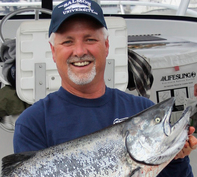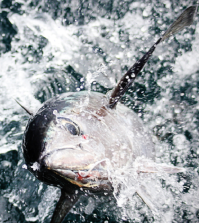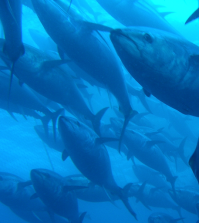Tuna Fishing Washington (Part 2)
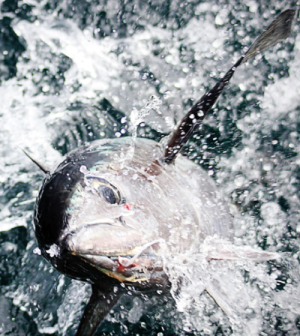
To read part one of this series, click here.
After all the preparation has gone into your boat and you have determined that you have the proper vessel and equipment to go tuna fishing, it is time to gather gear. You need to determine what methods that you are going to use to pursue these fish. There are four methods that most recreational fishermen will use to catch tuna: trolling, live bait, jigging, and casting soft baits. Since we are talking about how to get started tuna fishing I will cover trolling and live bait fishing in detail and just touch on the others. We could spend many hours discussing styles and techniques but our purpose here is to help you get started.
Trolling
This is the way most people start out tuna fishing and the way many of us locate the location of school each day we are out. First you will need the right rod and reel.
 Rods – Most people start out using their Halibut fishing gear to troll for tuna. You need a 5 to 6.6 foot heavy rod. It needs to be in the 80 to 120 pound weight class. You need a rod with plenty of backbone. I prefer rods with standard eyes or guides versus roller guides. This makes a big difference in the type of line you use. Braided line tends to slip off the rollers and can get cut by the edges of the rollers. Monofilament on the other hand is thicker and will stay on the rollers. You can spend as much as you want on a trolling rod, but a basic economical rod will work fine.
Rods – Most people start out using their Halibut fishing gear to troll for tuna. You need a 5 to 6.6 foot heavy rod. It needs to be in the 80 to 120 pound weight class. You need a rod with plenty of backbone. I prefer rods with standard eyes or guides versus roller guides. This makes a big difference in the type of line you use. Braided line tends to slip off the rollers and can get cut by the edges of the rollers. Monofilament on the other hand is thicker and will stay on the rollers. You can spend as much as you want on a trolling rod, but a basic economical rod will work fine.
Trolling Reels – Personal preference come in to play here but there are a few things to look for. Deep water Halibut and Lingcod reels will work fine for this application. You want a reel with a high line capacity at least 300 yards. Some good choices are Penn’s 113,114,116, Shimano TLD 20 or 30, and Avet MX, LX, and JX reels. Two speed reels are even better but are a cost issue for most. There are a lot of other reels that will work but these are ones that I have personally used.
The one thing to avoid is a level wind reel. A tuna strikes so hard and runs so fast that level winds can jam, often followed by the reel, causing the line to snap.
Live Bait Rods and Reels
Rods – Unlike trolling rigs, this is where I think you need to pay attention to quality. Salmon rods will not work well for tuna. They are normally too light. Once you really get into tuna fishing, live bait is the way you will catch the majority of your fish. I look for a seven to eight-foot medium action rod with a strong backbone and a light tip. This gives you enough power to hold and turn the fish, yet enough sensitivity to get a great feel of the fish and to help with the drag to hold a big fish. Some of the manufacturers of these rods are Fetha Styx, Lamiglass, Seeker, and Okuma. This is not an area that I would substitute an inexpensive rod. You can use a rod that you also use for shallow water Lingcod fishing. I would look at a rod in the 15 to 30 pound weight class with a good grip on it. I have seen more than one rod get pulled right out of a guy’s hand.
Reels – Again avoid level wind reels. You are looking for a reel here with a high quality drag system and a line capacity of up to 300 yards. I use braided line so most reels will hold enough line. I use an Avet SX or MX reel. Okuma makes their Cedros series and Shimano has a TLD 15 that will work. This is an area where you can spend a lot of money. I also prefer a lever drag over a star drag, but it is not completely necessary. A spinning rod and reel will also work in this style fishing as long as it has the right amount of line capacity.
What line should you use?
In any of the applications I recommend using braided line but monofilament will work too. The number one rule here is make sure everyone on your boat is using the same type of fishing line. The reason for this is that braided line will cut through monofilament like a hot knife through warm butter. That being said, for trolling I recommend a 50 to 80 pound braided line or a 60 to 80 pound monofilament line. Once you see a tuna hit on the troll you will wonder if even that is enough. If you choose to use braided line you will need to tie on an 8 to 10 foot section of mono just prior to the hook. This is called a “Top Shot” and it should be 80 to 100 pound test. This serves several purposes but mainly it is a shock cord and it is easier to handle by hand than braid.
For bait reels I recommend 50 to 65 pound braided line and again you will want to use that same piece of top shot. Bait top shots should be 30 to 40 pound test and I highly recommend Fluorocarbon. This helps with abrasions and it is very stealthy. Believe it or not these fish can be line shy at times when fishing with bait.
Hooks – For Trolling I use 5/0 to 10/0 Siwash style hooks. I prefer open-eyed hooks so I can change them out if needed. These hooks need to be stout because you will be trying to stop a freight train with it, so no fine wire hooks here.
For bait I like to use a #1 or #4 ringed live bait hook. Yes I did say a #1 or #4 hook. Yes it will lie on the tip of your finger and yes it will handle these big fish. Last year my wife Cyndi landed a 40-pound Albacore Tuna on a #4 live bait hook. I shared that picture in part 1. But here is a 31 pounder on the same sized hook.
Lures – When trolling for tuna, here are a few of the suggested baits to try.
Tuna Clones – These are surface lures made by a variety of companies. The best color choices are Purple and Black, Zucchini-Green/Yellow/Orange, Mexican Flag -Green/White/Red, Pink/White.
Cedar Plugs – These do not look like they would catch anything but tuna can not resist them. Popular colors are Plain, Purple and Black, Blue and White. These plugs run just below the surface and have their own erratic action.
Diving Plugs – We use either the X-Rap size 20 or the large Mirror Lure by Rapala. These diving plugs run 10 to 15 feet below the surface and help to bring the deeper tuna up to the surface.
Gaffs and Nets
When your tuna gets to the boat you have a few options to land it.
Most people use a 4 to 6 foot gaff. Gaffs can be fiberglass or metal with no more than a three inch hook. These usually come with foam or cork handles. It is a really good idea to have one that floats … trust me on this one.
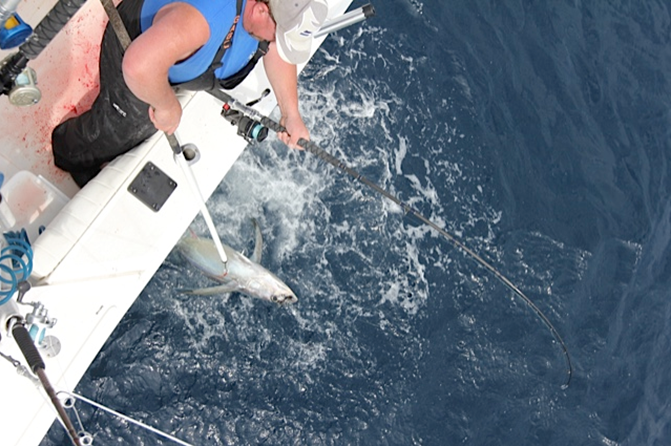
When gaffing a tuna, aim for the head so you do not damage the meat. But, as we always say, there are two types of tuna… those in the water and those in the boat. So, sometimes you just have to gaff the fish and it hits where it hits.
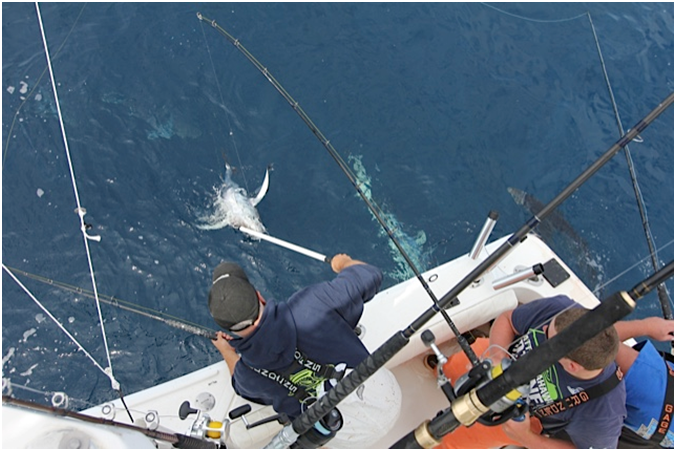
Netting tuna is always an option but it is not like netting a salmon. Albacore have extremely long pectoral fins which make them very difficult to remove from the net. This method does not damage the meat in any way.
In my next segment we will really get into the meat of tuna fishing. The run out; What to look for; How to set your trolling spread; What to do when you hook up; How to deploy live bait; and How to care for the tuna when you get them in the boat and home.
check back for part three of this series


